Indian journalist Nayanima Basu recalls a harrowing adventure in her just-released book.
NEW DELHI—Afghans are landlocked, yet their rivers flow through some extremely rugged geography into seas in South Asia, Central Asia, and the Middle East. The country’s civilizational crossroads and trans-regional trade routes are some of the oldest in humanity’s history, making it an unprecedented geopolitical flashpoint.
War, death, and destruction aren’t new to this territory. Neither are victories, defeats, extreme tragedies, as well as great escapes. While stories of defeats and victories have been talked about prominently in antagonistic narratives, stories of great escapes are less common, even more so when it comes to the escapes and daring journeys of women after the 2021 troop withdrawal of the United States and the Taliban’s overtaking of country’s governance.
In an exclusive interview, The Epoch Times talked to Indian journalist Nayanima Basu, whose escape from the Kabul airport a few days after the Taliban’s takeover forms the narrative to her just-released book, “The Fall of Kabul–Despatches From Chaos.”
Ms. Basu, who was then a journalist with the online Indian publication The Print, escaped from the Afghan capital just two days after incumbent President Ashraf Ghani fled the country and the Taliban marched into the capital. She fled amid an unfolding human crisis, just eight days before a bomb detonated at the Kabul airport, killing 170 Afghans and 13 American service personnel.
She landed in Kabul on Aug. 8. Just over a week later, as she drove to the airport on Aug. 17, she was astonished by how the city had changed. “This is not the same Kabul I had seen when I landed, or also when I came back from Mazar-i-Sharif,” she said. “This is not the same Kabul. This is changed! What happened? Is this [what] a collapsed country looks like?”
In northern Afghanistan near its border with Uzbekistan, Mazar-i-Sharif is the country’s fourth largest city and the capital of Balkh province. Ms. Basu, who is currently the editor for foreign affairs, strategy, and national security with Indian media the ABP Network, visited the city to report on Aug. 11 and Aug. 12, as the Taliban were engaging the Afghan army in an intense gun battle on the city’s outskirts.
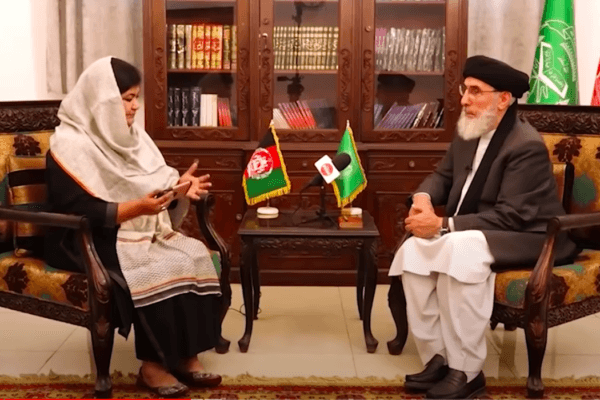 Indian journalist Nayanima Basu with veteran Afghan warlord Gulbuddin Hekmatyar, during an interview in Kabul on August 15, 2021. (Picture courtesy Nayanima Basu)
Indian journalist Nayanima Basu with veteran Afghan warlord Gulbuddin Hekmatyar, during an interview in Kabul on August 15, 2021. (Picture courtesy Nayanima Basu)A Daring Escape
When the Taliban captured Kabul on Aug. 15, the Indian journalist was in the middle of an interview with veteran Afghan warlord Gulbuddin Hekmatyar. The former mujahideen leader, nicknamed “the butcher of Kabul,” had twice served as Afghanistan’s prime minister.
The interview was halted abruptly and Hekmatyar was moved to safety while Ms. Basu’s panicked driver prepared to flee the scene.
Amidst the chaos that unfolded that day, her editor asked her to return to India, and a few hours later she found herself planning a daring escape. On the day that the Taliban took over, fighters entered her hotel at midnight to check for former Afghan officials.
“In fact, they came in my room also to check in the Serena Hotel, if any former official was hiding there. I went numb! Numb completely. I just had called my husband and I told him be online, don’t talk.”
On Aug. 16, before dawn, she took a cab to the airport and found the entire route manned by the Taliban. At every 100 meters, there were checkpoints with 20 Taliban fighters at each, she recalled.
“And those boys would hit at our windows, look inside and all of that. It was still kind of dark, it was four in the morning. And then when I reached the airport, I saw this huge rush. And I was like [wondering if] all of these people have come to catch a flight when the Taliban had taken over just a few hours before that. Then somebody told me that ’ma'am, Hum Tho Bhag Rahey Hain,‘ (’we are running for our lives’),” Ms. Basu said.
She now realizes what was happening, but at the time all was chaos and confusion.
“People running towards catching the plane, and then falling off from the fuselage! They were actually running for their life. They thought they can run away to America.”
Ms. Basu had to leave the airport that day after all flights were canceled, thousands of people thronged the airport and angry Taliban fighters indiscriminately fired at the crowds. When the man behind her was shot in the leg and fell to the ground, she froze with fear and began screaming. At that moment a stranger grabbed her hand, took her luggage, and helped her escape, finally convincing a taxi driver to take her to the Indian Embassy.
“I think that day at least I saw 50 to 60 people getting shot. One boy got hit and he died. He was hit on his head. His mother came and grabbed his body out before the Taliban could shoot others in the family,” she remembered.
Ms. Basu reached the Indian embassy. It was guarded by Taliban fighters; the road had been closed and she was told she could not enter.
After 45 minutes of negotiating at the embassy gate, she was finally allowed to enter when she showed her press card to one of the Taliban leaders—who was carrying a shoulder-launched anti-tank weapon—telling him a “true Talib” doesn’t let “foreigner woman” stand on the road for so long.
The next day, Aug. 17, she finally boarded an Indian Air Force C-17 Globemaster for a flight back home.
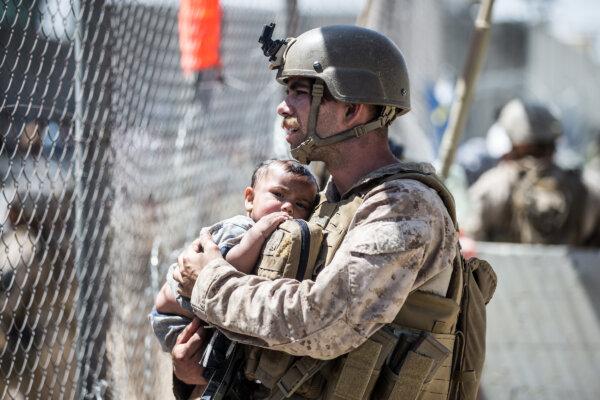 A Marine with Special Purpose Marine Air-Ground Task Force-Crisis Response-Central Command (SPMAGTF-CR-CC) calms a child during an evacuation at Hamid Karzai International Airport, Kabul, Afghanistan, on Aug. 26, 2021. (U.S. Marine Corps photo by Sgt. Samuel Ruiz).
A Marine with Special Purpose Marine Air-Ground Task Force-Crisis Response-Central Command (SPMAGTF-CR-CC) calms a child during an evacuation at Hamid Karzai International Airport, Kabul, Afghanistan, on Aug. 26, 2021. (U.S. Marine Corps photo by Sgt. Samuel Ruiz).Kabul Airport Blast
On Aug. 26, a suicide bomber blew himself up outside the Abbey Gate entrance to Kabul’s Hamid Karzai International Airport. Thirteen American military personnel and an estimated 170 Afghans were killed in the incident.
The bomber was identified as Abdul Rahman al-Logari, an Islamic State operative who had been held in a coalition detention facility in Afghanistan but was released by the Taliban after the troop withdrawal, according to a new U.S. military review this month that identified him for the first time.
Ms. Basu recounted her presence at the same gate on the day of her escape. She was in a huge convoy that also included the then-Indian ambassador to Kabul, Rudrendra Tandon. The convoy had to wait for several hours at the entry gate, very close to the Abbey Gate, while seeking entry to the actual airport, which was manned by U.S. troops.
“Outside there was this amount of people and they were banging on our windows. Some of them telling us [to] ’take our children, at least take my husband or take my wife inside with you, because if we stay here, they‘ll kill us.’ They were whipping them, it was such a horrendous scene, it was in the middle of the night [on Aug. 16],” Ms. Basu said.
For days after the exit of the Indian convoy, desperate crowds continued to mass around the airport, waiting in the scorching heat under the open sky, in the hopes of escaping.
When she heard about the blast, Ms. Basu realized how fortunate she was. “I just thought it could have happened at that point of time also,” she said.
She realized that some of the Americans who stamped her visa on Aug. 17 may have died in the blast. “And I felt so sorry for those 13 U.S. personnel, those young boys and girls who may have also have been there. While getting my visa, my passport done while we boarded [the plane] C-17, we interacted with a lot of U.S. soldiers, the young girls and boys who are managing the visas and all of that, stamping our passports. And maybe one of them was there.”
While recounting that the Indian convoy had Indian diplomatic staff as well as other journalists, she also recalled the mothers pleading for help outside her window, ready to give their babies to her. She suspected the death toll was much higher than reported.
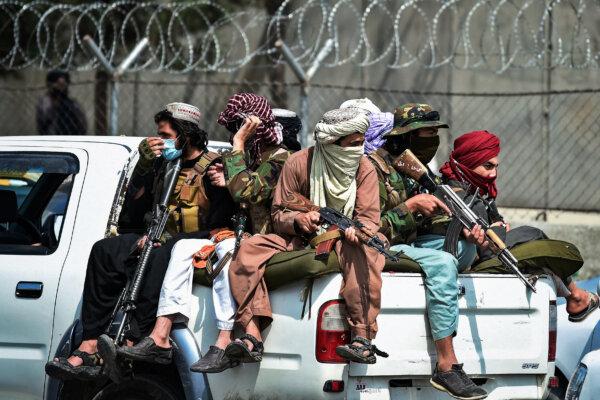 Members of the Taliban outside the airport in Kabul after the U.S. withdrawal in Afghanistan, on Aug. 31, 2021. (Wakil Kohsar/AFP via Getty Images)
Members of the Taliban outside the airport in Kabul after the U.S. withdrawal in Afghanistan, on Aug. 31, 2021. (Wakil Kohsar/AFP via Getty Images)Staying Afloat Amidst Chaos
Among her positive experiences, Ms. Basu reminisced about her visits to Kabul’s women-run beauty parlors, which were later shut down by the Taliban.
“So the Taliban came and shut down all the beauty parlors and defaced the photos, the posters [displayed] in front of them.” During her time in Kabul, she said, “I made a point to go twice into a beauty parlor.”
Ms. Basu made friends with a salon owner who had been two years old when the Taliban took over the country in 1996. Her family had escaped to Pakistan.
“And then in Islamabad, she took a beauty course. And Islamabad was full of Pakistani models and film stars. She had grown up. So then they thought that, ‘let’s go back to Afghanistan.’ She got married, and her husband is a Pashtun. And she said: ‘We thought, let’s go back to our own country. Now that Americans are there, it’s a developed society, we’ll open our own parlor.”
“So I told her that, ‘You know, people are saying the Taliban will come back. What would you do?’ She said, ‘Maybe. But they will not stop beauty parlors. This is a different Afghanistan and the Taliban knows that.’”
Ms. Basu still stays in touch with the young beauty parlor owner, who finally managed to escape Afghanistan.
She is also in touch with her driver. He is still in Afghanistan, and his home is visited by Taliban fighters each day, because his wife is known to be a great cook.
“They asked her to make dinner every night. So there’s ... 20 to 25 Taliban fighters or leaders who come to their place every night; she’s cooking roti and kebab every single day for them, with whatever savings the husband had made, because he has been with foreign journalists. Of course, he made good money. But now all that is, I think, is gone.”

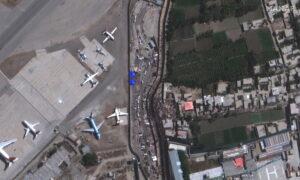



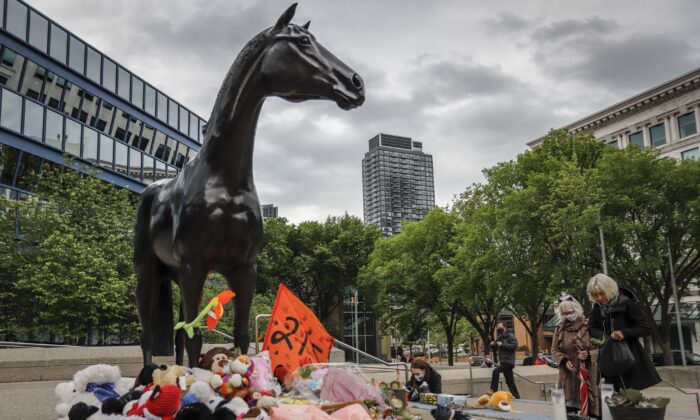
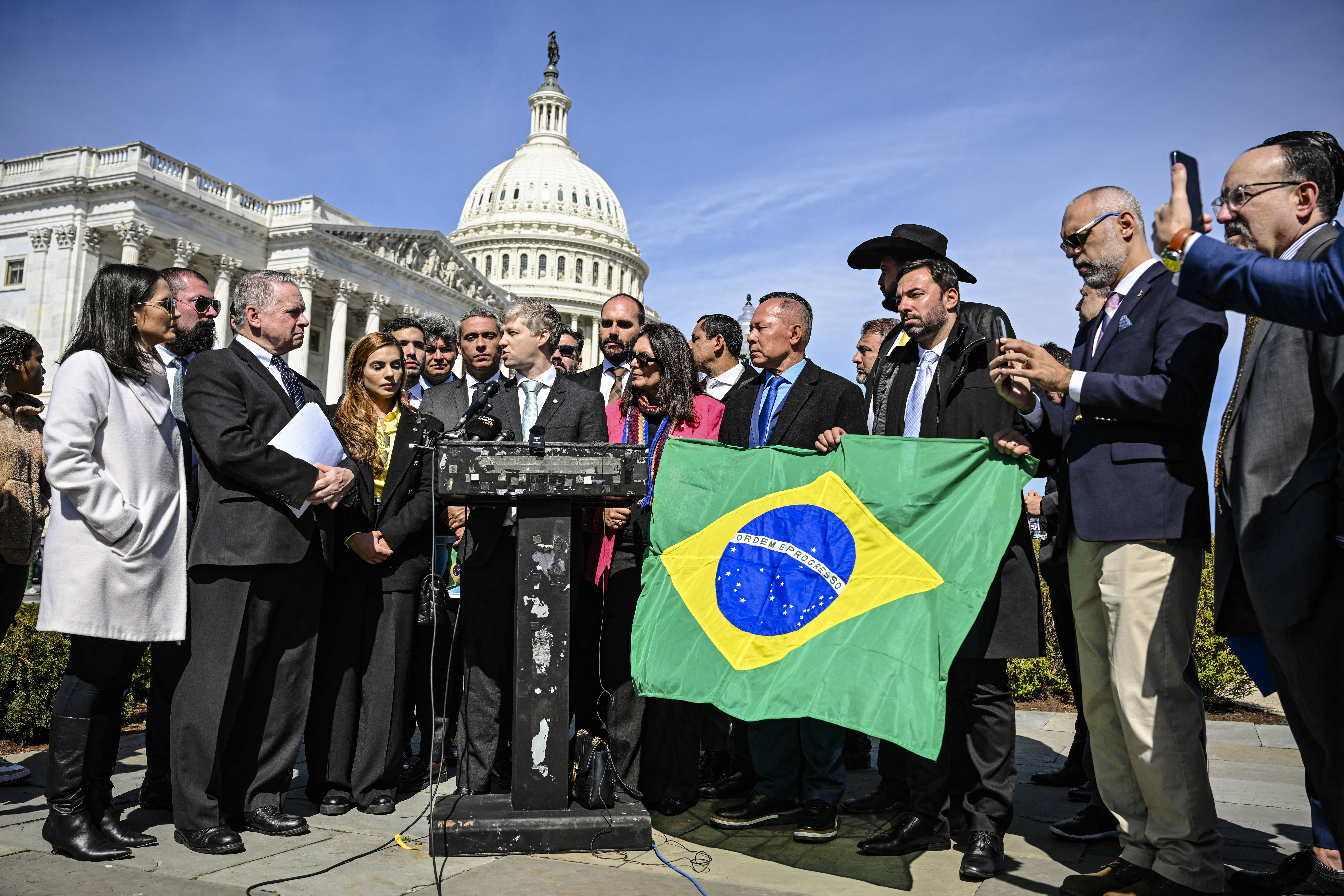




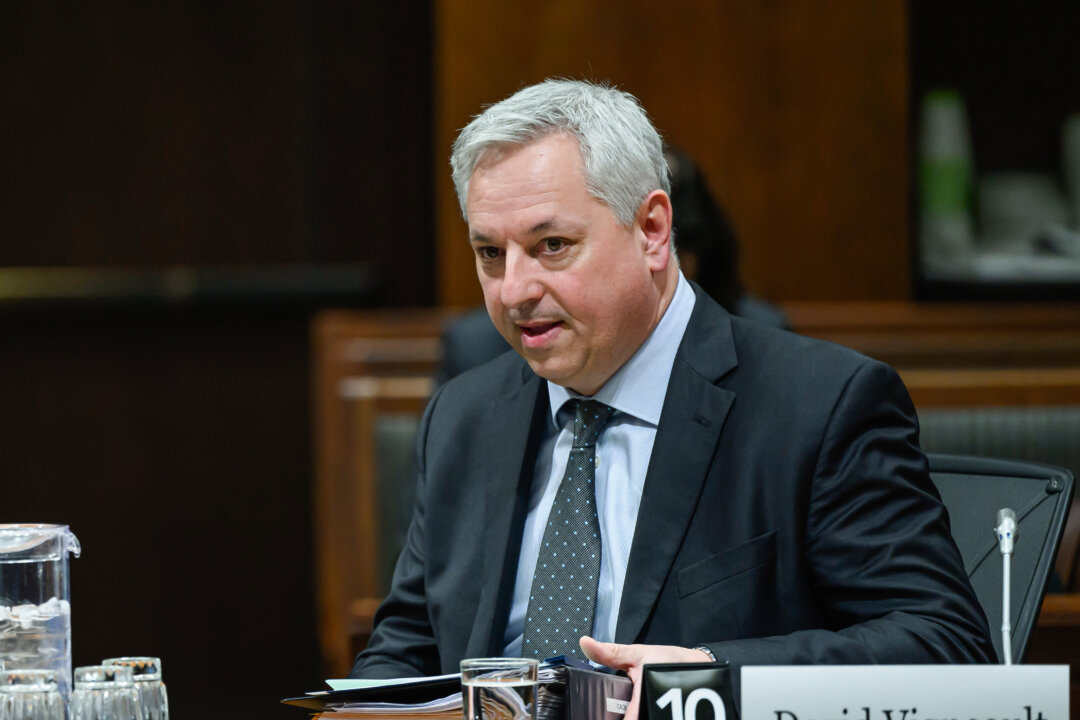
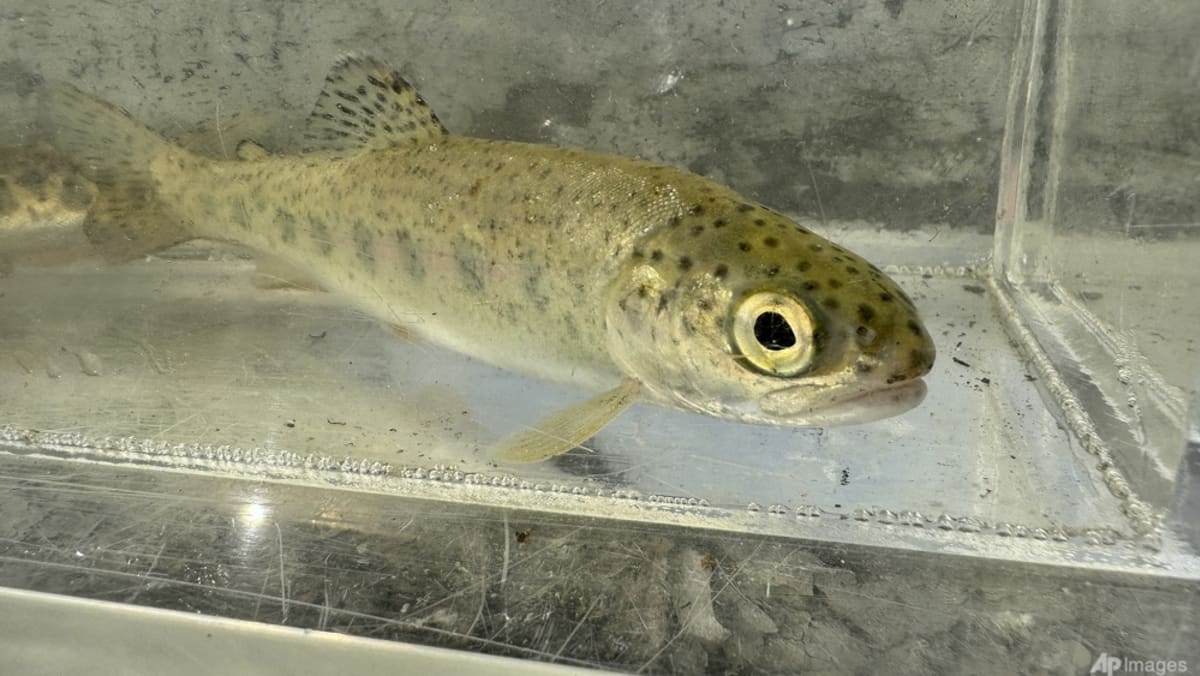

 English (US) ·
English (US) ·  Turkish (TR) ·
Turkish (TR) ·